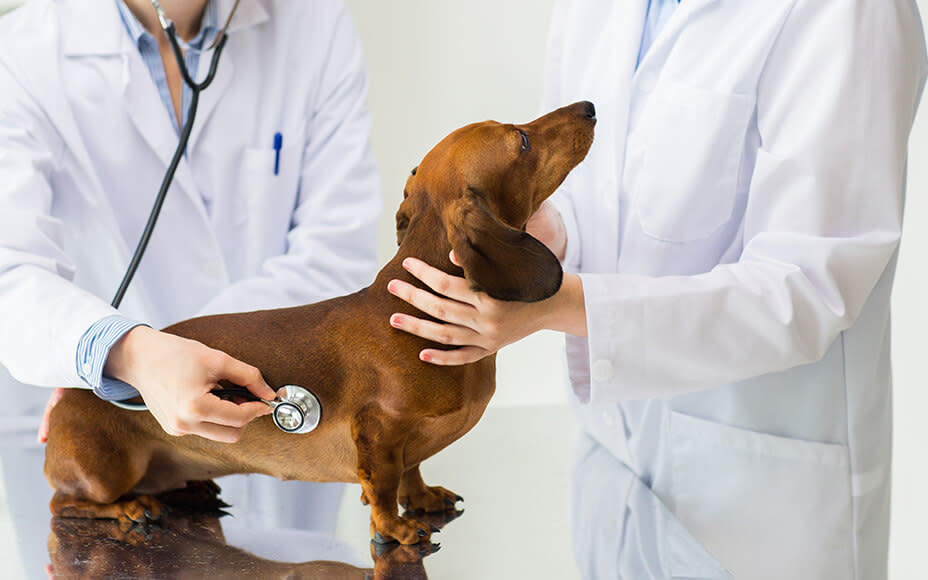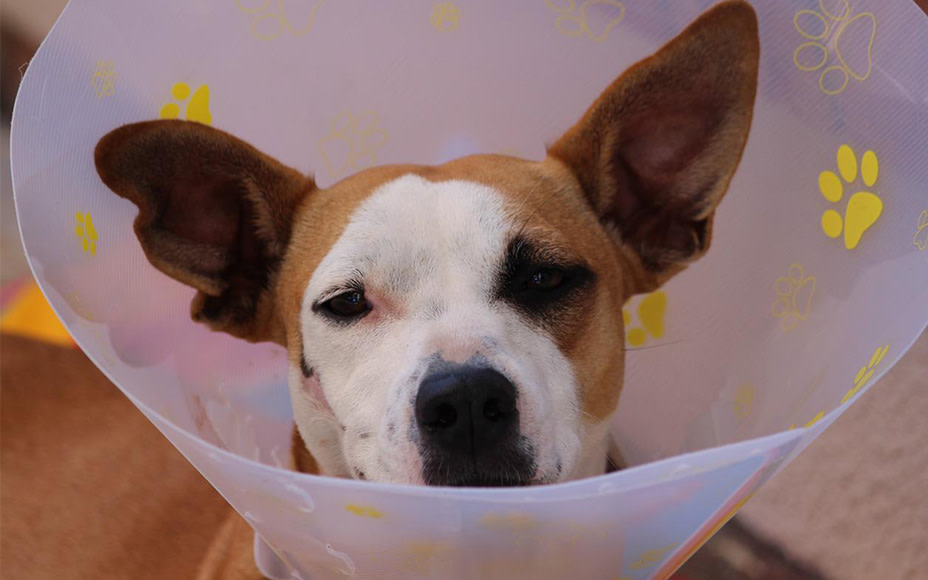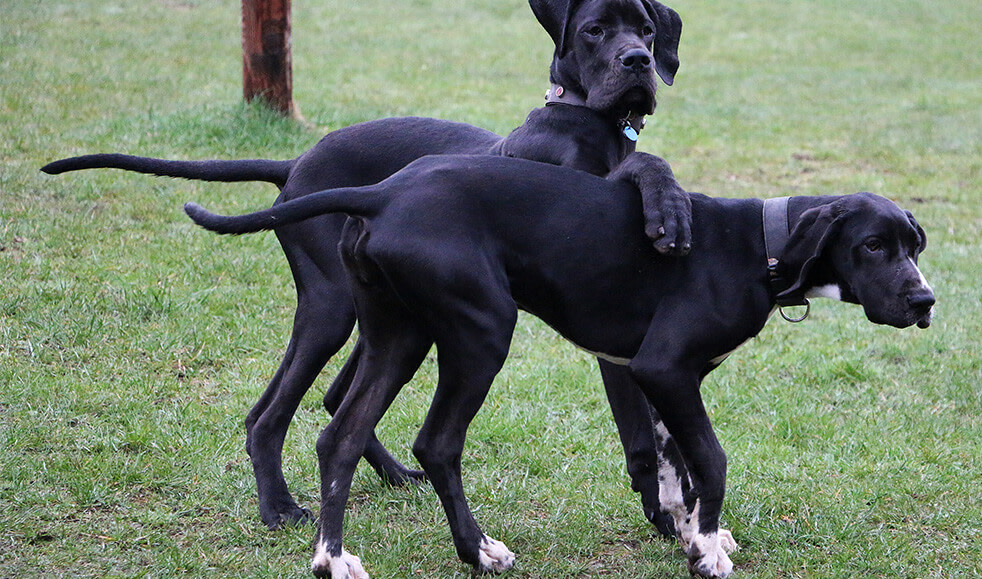At what age should dogs be neutered? Learn everything about the right timing for neutering male dogs.
- Neutering Male Dogs – When is the Right Time?
- Overview of Neutering in Dogs What is neutering?
- How is neutering done in male dogs?
- Before and after the surgery: What to consider?
- Reasons for neutering male dogs: proven or not?
- The right time: When should dogs be neutered?
- “Temporary Neutering” – Neutering Chip for Male Dogs?
Neutering Male Dogs – When is the Right Time?
Many owners come to the question of when is the right time to neuter not only female dogs. The reasons for neutering dogs are diverse: Dominant and impulsive behavior is often the primary consideration for the procedure in male dogs. But what actually happens during neutering, and at what age can and should the operation be performed?
Overview of Neutering in Dogs What is neutering?
Neutering involves the removal of the gonads in dogs. In males, these are located in the testicles, while in females, they include the ovaries, fallopian tubes, uterus, and cervix. Unlike sterilization, where only the sperm or fallopian tubes are severed, neutering involves the removal of organs under general anesthesia. The procedure is irreversible, and according to animal welfare laws, a medical indication is necessary to neuter a dog.

How is neutering done in male dogs?
- Vet shaves and disinfects the area.
- Pushes the testicles forward, makes an incision in front of the scrotum.
- Moves (sides) testicles forward and clamps the spermatic cord.
- Cuts and removes the testicles.
- Stitches the incision.
Once all the steps are completed, and your furry friend has recovered from the initial shock, your brave canine companion deserves a snack. However, wait until the anesthesia has worn off. With a tasty treat from iHugDogs, healthy indulgence is easy!
Before and after the surgery: What to consider?
The duration of neutering in male dogs varies but typically takes around 30 minutes. Your furry friend should not eat anything 12 hours before the surgery and must appear fasting. A small sip of water is allowed in the morning, but nothing should be consumed before the surgery.
After the operation, your dog wakes up from anesthesia, still a bit groggy, with incomplete coordination. He will require constant supervision in the first few hours post-surgery. Keep walks short in the first few days, as the wound needs time to heal, and your dog needs rest. Even the slightest jumps, climbing stairs, etc., can stretch the wound, leading to bleeding in the initial days. Therefore, check the wound daily – if anything seems unusual, have your canine companion examined at the vet clinic.

After 10 days, the stitches can be removed, and to prevent your dog from nibbling at the wound, a cone collar or a body suit for dogs is recommended.
Neutered dogs often tend to gain weight and require less energy than intact males. In the feeding recommendations, you can reduce the amount a bit if your dog has been neutered. Remember, the foundation for a healthy life lies in the diet. Focus on a composition without grains, sugar, and artificial colors or flavors.
Reasons for neutering male dogs: proven or not?
Surgery should never be performed without a valid reason, as certain risks arise solely from general anesthesia. Arguments like “Neutering resolves behavioral problems and/or reduces the risk of cancer” lack definitive evidence. Nonetheless, many owners opt for neutering their dogs for these reasons.
Neutering does not have proven benefits when it comes to obedience, dominance, and aggression. It is often forgotten that many dog breeds are naturally protective – and this inclination is not “eradicated” by neutering. If dogs tend to be disobedient and mount legs or other dogs, neutering will likely not bring improvement in almost all cases. Regarding cancer, evidence is still lacking – a presumed reduction in cancer risk can only be assumed if dogs are neutered before sexual maturity, essentially in puppyhood.
What about valid and proven reasons for neutering? Neutered dogs can no longer reproduce. If your dog lives in a group with females, and pregnancy needs to be avoided, neutering is an option alongside separating the dogs. Reduced hormones also mean less stress for males – the constant search and suffering during the desire for in-heat females diminish. Further medical reasons justifying neutering in males include diagnosed diseases – if a male dog develops testicular cancer, neutering is the preferred surgery. Other conditions that justify neutering in males are testicular torsion, undescended testicles, or prostate problems.
The right time: When should dogs be neutered?
Once the decision is made, and your veterinarian has concluded that there is a medical indication for neutering, the question of the right timing arises.
During the puberty of dogs, which starts around the 6th month of life, hormones are released that influence the physical and psychological development of dogs. Besides physical growth, there are also behavioral developments – your dog becomes more mature. For instance, sexual hormones influence bone structure and your dog’s behavior. Early-neutered dogs – before sexual maturity – exhibit significantly more childish behavior throughout their lives, and growth is stunted. Therefore, neutering is recommended in almost all cases only after the completion of puberty. Whether a dog is fully grown and fully developed can be determined by veterinarians. Typically, this is around the end of the 1st year of life.

“Temporary Neutering” – Neutering Chip for Male Dogs?
Because a surgical procedure like neutering in male dogs must be medically justified, and yet owners hope for improvement in territorial and aggressive behavior, some clinics offer chemical neutering – a temporary neutering without direct surgery. A Suprelorin implant, a kind of chip, is injected by a syringe, which, through the active substance deslorelin, neuters a dog. Testosterone and the ability to reproduce are inhibited for about 12-14 months – thus, a procedure is avoided for the time being, and owners can observe whether the expected effects on behavior occur or not.


